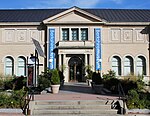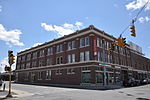Berkshire Natural Resources Council
The Berkshire Natural Resources Council (BNRC) is a non-profit land conservation and environmental advocacy organization formed in 1967 that protects and maintains more than 50 properties and 10,000 acres (4,000 ha) of conservation restrictions around the Berkshires in western Massachusetts. The mission of the BNRC is "to protect and preserve the natural beauty and ecological integrity of the Berkshires for public benefit and enjoyment."BNRC has been active in preserving natural landscapes and resources on Mount Greylock, Yokun Ridge, and the South Taconic Range. It maintains hiking trails at its Steven's Glen preserve in West Stockbridge, Basin Pond in Lee, Olivia's Lookout in Lenox, and Bob's Way in Monterey, Massachusetts. It has also been active in advocating for environmental protection and remediation of the Housatonic River watershed.
Excerpt from the Wikipedia article Berkshire Natural Resources Council (License: CC BY-SA 3.0, Authors).Berkshire Natural Resources Council
Bank Row, Pittsfield
Geographical coordinates (GPS) Address Nearby Places Show on map
Geographical coordinates (GPS)
| Latitude | Longitude |
|---|---|
| N 42.44775 ° | E -73.2535 ° |
Address
Patricks Pub
Bank Row 26
01201 Pittsfield
Massachusetts, United States
Open on Google Maps











